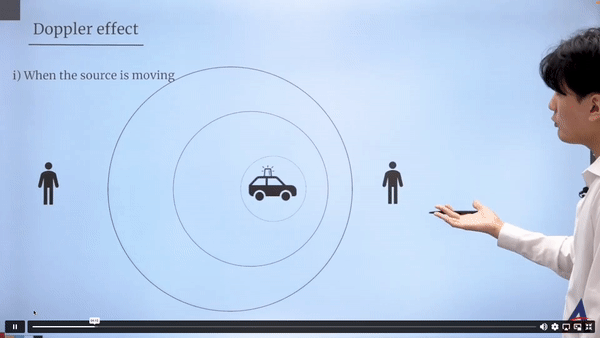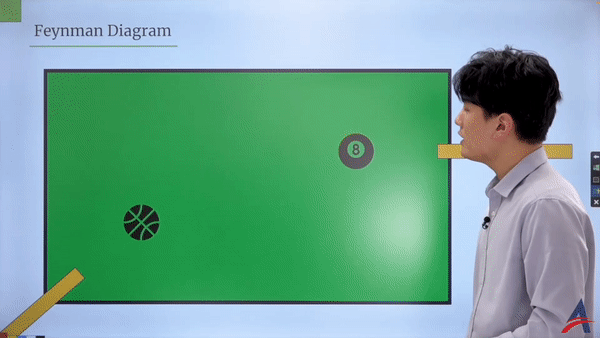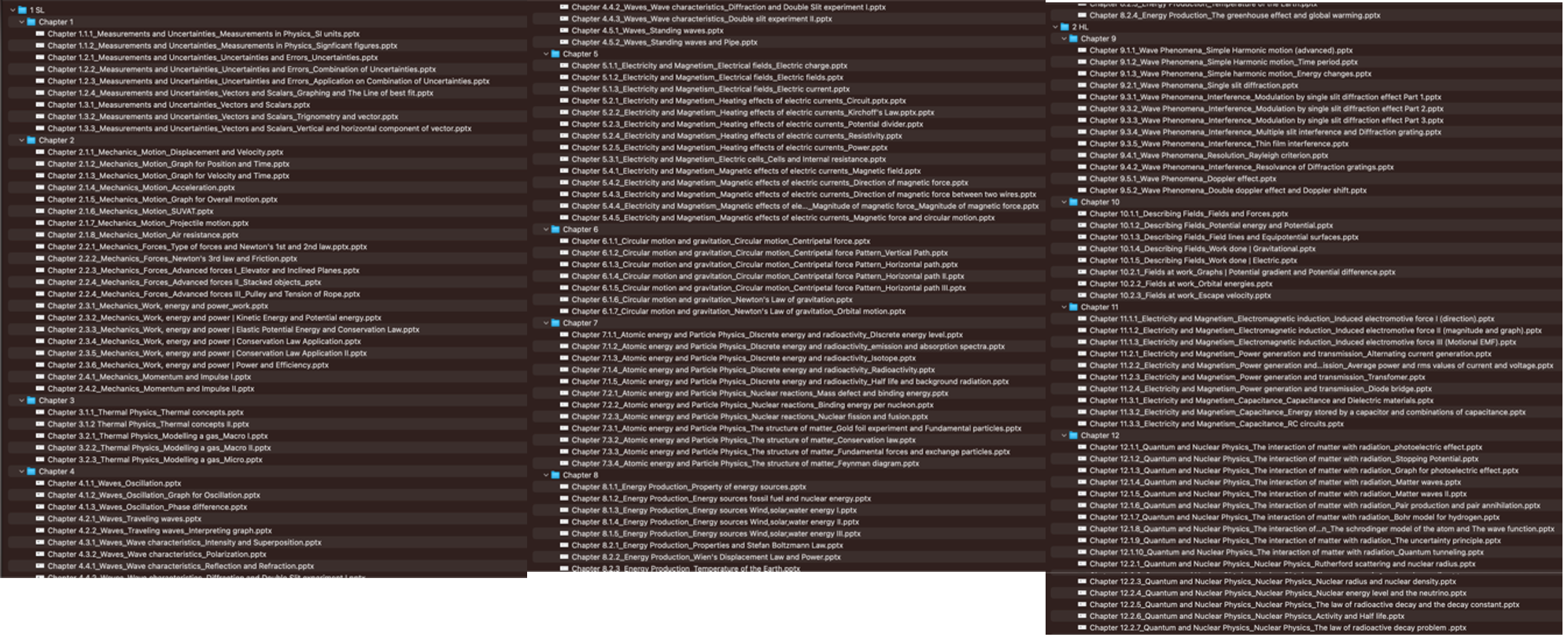IB Physics: Full Set (HL)
최승호 선생님의 IB Physics 전체 단원
-
무료 수업 24:53
-
1.1.2 Significant figures25:50
-
1.2.1 Uncertainties27:46
-
1.2.2 Combination of Uncertainties29:04
-
1.2.3 Application on Combination of Uncertainties18:31
-
1.2.4 Graphing and The line of best fit25:47
-
2.1.1 Motion, Displacement, Velocity49:18
-
무료 수업 18:01
-
2.1.3 Graph for Velocity and Time25:14
-
2.1.4 Acceleration33:54
-
2.1.5 Graph for overall motion27:49
-
2.1.6 SUVAT17:32
-
2.1.7 Projectile motion30:00
-
2.1.8 AIr and fluid resistance10:37
-
2.2.1 Type of forces and Newton's 1st and 2nd law.40:42
-
2.2.2 Newton's 3rd law and Friction35:59
-
2.2.3 Advanced forces I: Elevator and Inclined Planes53:08
-
2.2.4 Advanced forces II: Stacked objects26:08
-
2.2.5 Advanced forces III: Pulley and Tension of Rope19:27
-
2.3.1 Work30:27
-
2.3.2 Kinetic energy and Potential energy29:07
-
2.3.3 Elastic Potential Energy and Conservation Law26:56
-
2.3.4 Conservation Law Application I48:39
-
2.3.5 Conservation Law Application II29:10
-
2.3.6 Power and Efficiency24:04
-
3.1.1 Thermal Physics Thermal Concepts I48:51
-
무료 수업 23:37
-
4.1.1 Oscillation31:55
-
4.1.2 Graph for Oscillation33:28
-
무료 수업 17:06
-
4.4.1 Reflection and Refraction34:41
-
4.4.2 Diffraction and Double slit experiment I19:55
-
4.4.3 Double slit experiment II38:08
-
5.1.1 Electric charge44:31
-
5.1.2 Electric fields33:28
-
무료 수업 26:51
-
5.2.1 Circuit32:09
-
5.2.2 Kirchoff's circuit law37:10
-
5.2.3 Potential divider32:16
-
5.2.4 Resistivity19:30
-
5.2.5 Power21:55
-
무료 수업 26:29
-
6.1.2 Centripetal force Pattern I Vertical Path28:34
-
6.1.3 Centripetal force Pattern | Horizontal path I28:44
-
6.1.4 Centripetal force Pattern | Horizontal path II14:52
-
6.1.5 Centripetal force Pattern | Horizontal path III17:44
-
무료 수업 29:52
-
7.1.2 Emission and absorption spectra17:49
-
7.1.3 Atom and Isotope19:04
-
7.1.4 Radioactivity36:10
-
7.1.5 Half life and Background radiation22:34
-
7.2.1 Mass defect and binding energy30:10
-
7.2.2 Binding energy per nucleon23:33
-
7.2.3 Nuclear fission and fusion19:26
-
8.1.1 Energy and power generation - Sankey diagram36:05
-
8.1.2 Fossil fuel and Nuclear energy34:12
-
무료 수업 20:47
-
8.1.4 Wind, Solar, Water energy II20:47
-
8.1.5 Wind, Solar, Water energy III24:48
-
무료 수업 26:08
-
9.1.2 Time period24:01
-
9.1.3 Energy changes17:31
-
9.3.1 Modulation of two slit interference by one slit diffraction effect (Part 1)14:59
-
9.3.2 Modulation of two slit interference by one slit diffraction effect (Part 2)33:09
-
9.3.3 Modulation of two slit interference by one slit diffraction effect (Part 3)10:34
-
9.3.4 Multiple-slit interference and Diffraction grating22:08
-
9.3.5 Thin film32:02
-
10.1.1 Fields and Forces21:13
-
10.1.2 Potential energy and Potential38:30
-
10.1.3 Field lines and Equipotential surfaces25:40
-
10.1.4 Work done | Gravitational29:31
-
10.1.5 Work done | Electric28:05
-
10.2.1 Graphs | Potential gradient and Potential difference37:45
-
10.2.2 Orbital motion37:09
-
무료 수업 26:21
-
무료 수업 23:59
-
11.1.2 Induced electromotive force II (magnitude and graph)26:42
-
11.1.3 Induced electromotive force III (motional emf)11:25
-
11.2.1 Alternating current generation10:18
-
11.2.2 Average Power and rms values of current and voltage18:26
-
11.2.3 Transformer30:00
-
11.2.4 Diode bridge17:34
-
무료 수업 36:11
-
12.1.2 Stopping Potential18:02
-
12.1.3 Graph for photoelectric effect18:57
-
12.1.4 Matter waves22:36
-
12.1.5 Matter waves II15:37
-
12.1.6 Pair production and Pair annhilation13:55
-
12.1.7 Bohr model for hydrogen21:32
-
12.1.8 The Schrödinger model of the atom and the wavefunction19:07
-
12.1.9 The uncertainty principle21:53
-
12.1.10 Quantum tunneling17:03
-
12.2.1 Rutherford scattering and Nuclear radius18:12
-
12.2.2 Electron scattering and Nuclear radius23:58
-
12.2.3 Nuclear radius and Nuclear density18:28
-
12.2.4 Neutrino17:19
-
12.2.5 The law of radioactive decay15:39
-
12.2.6 Activity and Half life15:37
-
12.2.7 Problem solving for the law of radioactive decay30:14
최승호 선생님의 IB Physics (HL) 강좌입니다.
다루는 단원은 Chapter 1~12 입니다. (SL과 HL 포함)
*최승호 선생님의 강좌는 각 단원별 기본 문제풀이도 포함되어 있습니다!
*얼라이언스 에듀의 모든 IB 과목의 HL 과정 강좌는 SL 내용을 포함하고 있습니다!
일시정지 기간: 21일 3회
교재 다운받는 방법:
인강 수강 시에 선생님의 핵심 노하우가 담긴 필기용 교재를 학생분께 PDF로 드립니다.
1) 인강 결제 후에 왼쪽 상단에 있는 "내 강의실"에서 구매한 강의를 누르면 아래 사진과 같은 수강 페이지가 보이게 됩니다.
2) 각 단원의 첫 번째 영상을 보면 "첨부파일" 버튼이 있는데, 이를 누르면 PDF가 열려서 다운이 가능합니다^^

질문하기 방법:
인강 수강 시에 강의에서 궁금한 내용을 올리시면 다음날 까지는 답변을 드려요~
선생님의 빠르고 정확한 답변을 위해 학생분들은 아래 형식을 꼭 지켜주세요!
1. 궁금한 부분의 강의 영상 번호 (1.1.1)
2. 강의 영상의 시간
3. 궁금한 내용을 구체적으로!

인강 내용

최승호 선생님의 IB 물리 인강은 IB에서 정말 필요로 하는 핵심 문제 패턴과 개념들을 위주로 담고 있습니다. 예를 들어 IB 물리에서 원리로는 가장 어렵다고 여겨지는 파인만 다이어그램의 경우, 실제로 IB에서는 원리가 어려운 만큼, 문제는 오히려 매우 쉽게 출제하기 때문에 IB의 출제 의도를 명확하게 파악하는 것이 불필요한 공부를 줄여줄 수 있습니다.

제 강의 교과서 및 인강에서의 이 체크 표시는 7점을 맞기 위해서 최소로 알아야 하는 내용들을 의미합니다.
이 표시만 공부하여 요령을 피우라는 것이 아니라, 주요 부분들을 항상 먼저 공부하고 나머지 부가적인 부분들을 공부하시길 바라겠습니다.

최승호 선생님의 IB 물리 인강 및 강의 교과서는 교육과정 변경 년도인 2016년도 이후의 거의 모든 IB 기출 문제에 대한 풀이를 담고 있습니다. 단순히 인터넷 강의에서 개념 및 원리만 배우는 것이 아닌, 적용 범위 및 모든 문제들에 대한 정밀한 풀이들이 들어있습니다. 또, 올해 (2023년 9월)부터 새로운 교육과정이 예고되어 있기 때문에, 변화에 맞춰 역시 업데이트 될 예정입니다.
다른 인터넷 강의들과 다르게 질문이 있을 경우 자유롭게 사이트에서 질문 칸을 통해 질문이 가능합니다. 빠르면 하루, 아무리 늦어도 3일 내로 답장을 드립니다.

완전 기초가 필요한 학생들부터 심화 과정이 필요한 학생들의 수요까지 역시 모두 포함하고 있습니다. Hard라고표기된 문제들의 경우 IB 패턴 내에서 보다 약 10-20% 정도 어려운 문제들로 직접 제작했습니다.



이렇게 IB에 완전히 특화된 개념/원리, 적용 및 모든 IB 기출 문제풀이, 직접 제작한 심화문제풀이를 빠짐없이 포함하여 137강, 무려 61시간의 강의를 제작했습니다.

강의 교과서의 총 갯수는 강의 수와 동일하게 137개로 총 3000 페이지가 넘어갑니다. 강의를 구매하시면 이 모든 강의 교과서가 무료로! 같이 온라인 배송될 예정입니다.
현재 제 오프라인 강의는 여름방학 특강 기간을 포함하여
2023년 12월까지 수업이 더 불가한 상태입니다.
HL 기준 강의가 총 61시간이라는 것을 감안하였을 때, 단순히 제 오프라인 수업료를 곱한다면, 교과서 비용을 제외하더라도 약 61*12=722만원의 약 10% 정도밖에 되지 않는 가격으로 제 온라인 강의를 만나 볼 수 있습니다.

IB 물리 HL은 85만 5천원, IB 물리 SL은 49만 5천원에 판매되고 있으며, 가격이 부담될 경우 파트별 (1,2,3)으로 쪼개진 강의를 선구매 후 판단하실 수 있습니다.



